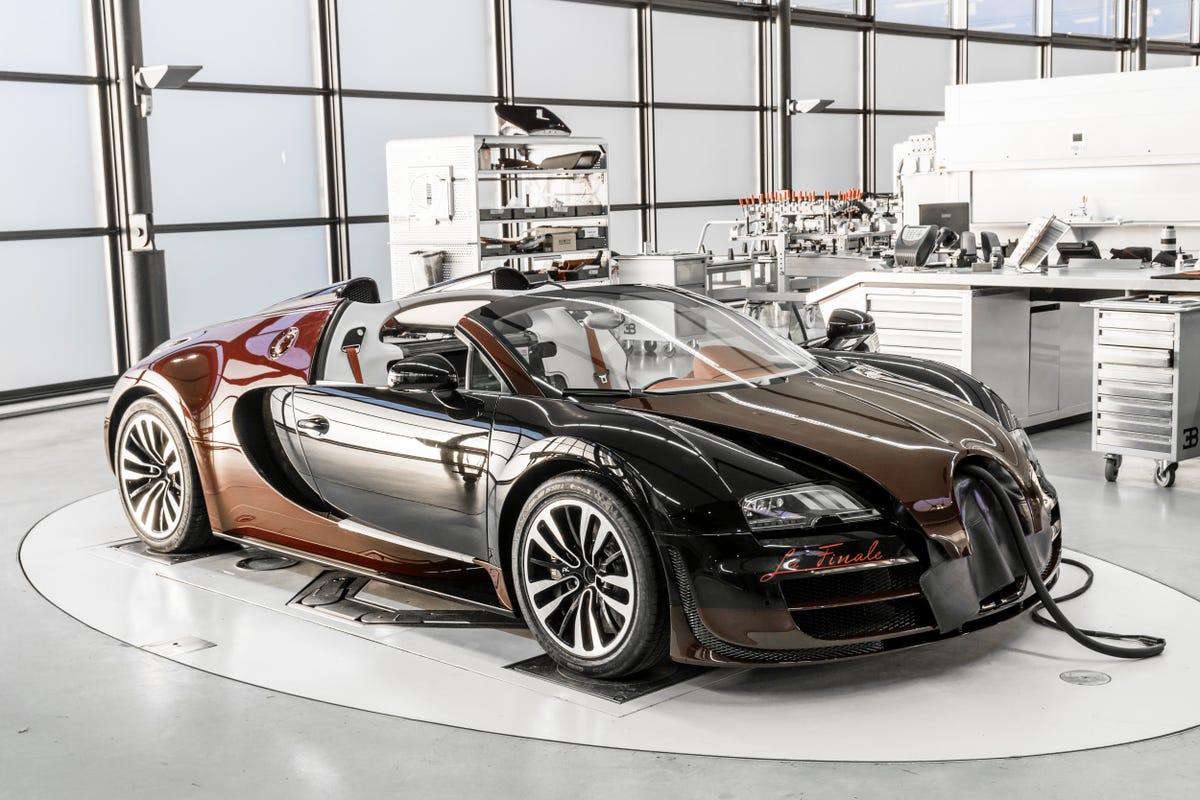See how Bugatti built its final Veyron, 'La Finale' (pictures)
The Bugatti Veyron is the pinnacle of automative engineering. Come see how the last ever Veyron -- La Finale -- is put together.

The Bugatti Veyron is famous for taking the crown as the world's fastest road car, reaching a dizzying top speed of 267 mph -- a crown it stole from the McLaren F1. That its phenomenal performance has not been at the expense of luxury and style has made the Veyron a poster boy for car fans, automotive engineers and excitable teenagers the world over.
The Veyron has finished production after 10 years, but it's not going quietly -- one final car has been produced, named "La Finale", and Bugatti has shown us how this multi-million pound monster was born.
The La Finale starts out as a rather unassuming shell, produced in Bugatti's Veyron factory in Molsheim, in eastern France.
It takes around three months to build the car, which is done entirely by hand. But that's after several more months of acquiring the parts and having any custom components created (such as trim, or specially coloured panels).
Due to the high speeds -- not to mention the extremely high heats in the engine bay -- the car can achieve, Bugatti wasn't able to use components typically found in automotive design.
Carbon fibre brackets -- which can withstand high temperatures -- are used to secure the engine and gearbox while the whole of the passenger cabin is made from a carbon fibre "monocoque" shell. McLaren uses a similar monocoque cockpit in its P1 supercar.
Titanium bolts are used to connect the front, middle and rear parts of the car, due to the metal's high strength and light weight.
The La Finale is the 450th Veyron made -- and the last -- and was shown off at this year's Geneva Motor Show.
The carbon fibre panels are attached. Bugatti hand presses its own carbon fibre panels and has developed its own method to dye them this deep red colour, especially for the La Finale.
In order to generate the desired power, Bugatti had to fuse together two VR8 engines, to form a W16 engine -- complete with four turbo chargers. That takes the 2-tonne car from 0 to 62mph in only 2.5 seconds.
The high speeds of the car naturally requires some impressive braking technology to stop it. Carbon fibre brake discs are used, which are so large that larger wheels and suspension had to be created.
The wheels, and the special Michelin tyres -- which cost around €23,000 ($26,000) per set -- can take the car from 62 mph to 0 in 2.2 seconds.
That means the Veyron can go from 0 to 62 and back to 0 in the same time it takes a 2014 Audi R8 Spyder to go from 0 to 62, XCAR's Alex Goy explains in his video feature on the Veyron.
The car goes through rigorous quality tests before leaving the factory, including this monsoon test, where water is blasted at the car to check the waterproof seals.
As with the actual building of the car, all the final checks are done by hand -- with an extreme eye for precision.
The interior panelling and electronics are fitted. A wide variety of interior trims are available and Bugatti says that 16 bulls are used for the leather interior of just one Veyron -- more even than Bentley uses in its Mulsanne.
It has to be polished -- it wouldn't be right for the final owner of this car to receive it with smeary fingerprints all over.
The 'La Finale' signature is stitched into the interior leather, as well as inset into the carbon fibre panels on the outside.

